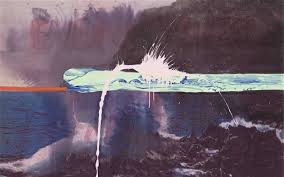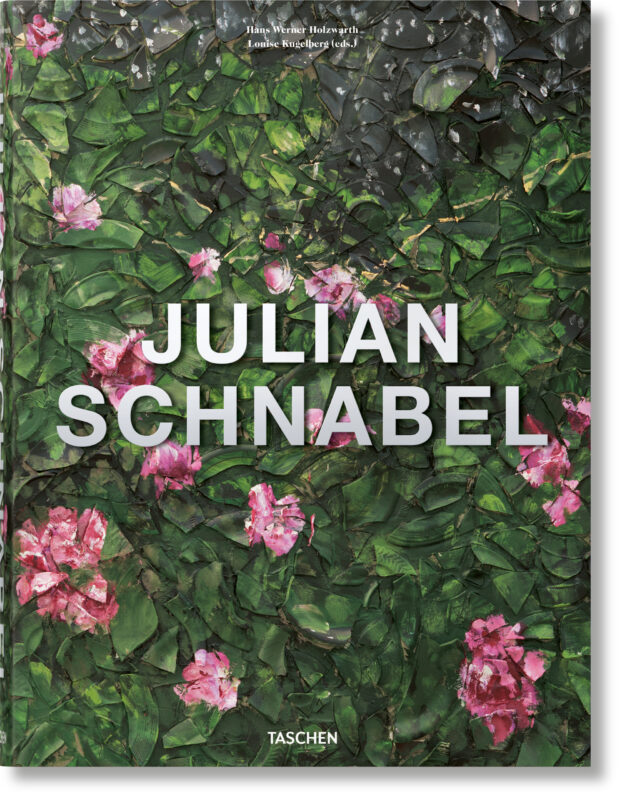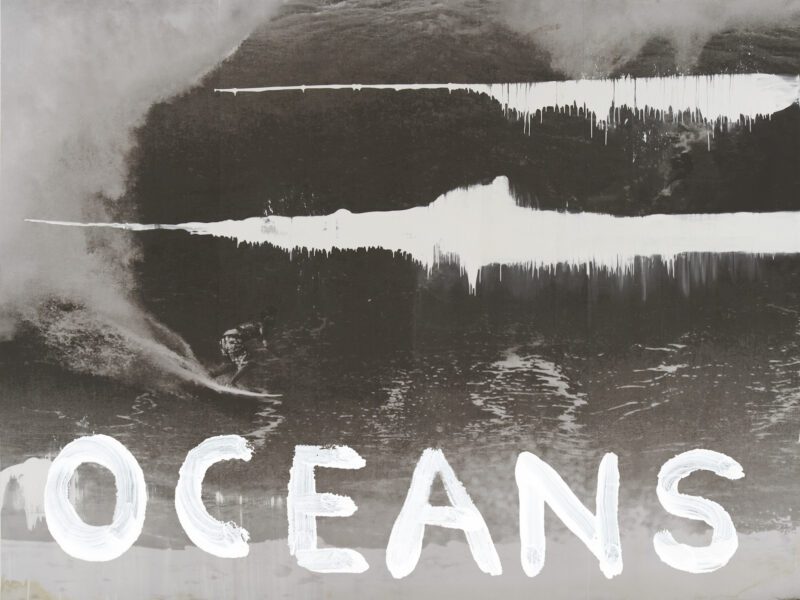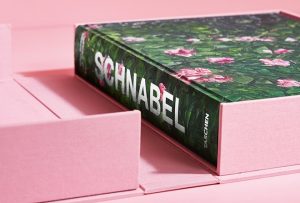
Dairy Art Centre, London
25 April – 27 July 2014
The paintings in this exhibition, his first in London for nearly fifteen years, perfectly exemplify the unbearable lightness of being Julian Schnabel. The pictures are immaculately composed, effortlessly expressive and executed with a stroke of good humour, as if the serious pursuit of painting were some way between a compulsion and a hobby for their creator.
The works are from two series of the last two decades: one focused on the painter and painting, the other dealing with matters of the sublime and spirituality. These sprawling canvases, laden with matter that abstracts representation to the point of dizziness, illustrate Schnabel’s dual gift of a refined understanding of the materiality of painting and his ability to wrestle with big ideas in a historically and theoretically informed manner.
There is always a sense in Schnabel’s paintings that at some point in the creative process something is arrested, as if an invisible hand calls to an end an effort towards representation, cohesion or rigidity. Consequently, the paintings posses only traces of these qualities and are rather dominated by the exuberance of their opposites. This is what stirs intrigue in the viewer, drawing us in to Schnabel’s world of riotous colour trying to uncover the lost line between accident and deliberation. In Untitled (Girl with No Eyes) (2014), the eyes are obscured by a vicious black mark, suggesting an error of judgement or an act of contempt that blights an otherwise affectionate portrait. The paintings on inkjet prints, such as Untitled (Amor Misericordioso III) (2004), look as if they are the result of an unfortunate spillage in the studio that was hastily made to look purposeful. In both cases, the way Schnabel handles both paint and subject-matter have an air of accident about them. But, he insists, there are no accidents, only very calculated attempts to convey the fluidity of life.
In contrast to his infamous plate paintings, the works in this show have a glossy, slick sheen about them. The pictures deploy varied materials to achieve a multiplicity of textures, so that the eye ranges over the surface with the energy of the hand. Untitled (2006) is glazed with a layer of resin so thick it appears to float above the paint and retains its bubbles and imperfections, creating the illusion of a tacky film of clear slime. This materiality connects the senses of sight and touch in the tradition of phenomenology to create a deeper affinity with his subjects. His allusions to history destabilise the viewer into thinking about contemporary art as a mere moment in a long line of interconnected events. Two works, Untitled (Self Portrait) (2004) and Untitled (Self Portrait) (2014), depict Schnabel at work in a pose that is strikingly reminiscent of Velazquez’s in Las Meninas.
This exhibition demonstrates that, after all the self-mythologising and bristling excess, Schnabel is a serious and committed painter. In the presence of Schnabel’s paintings one tends to feel the intoxicating combination of the weight of history and the capricious glamour of contemporary art, which is not such a bad thing, especially when it moves us to contemplate and to feel in a way that only art can inspire.
Daniel Barnes







